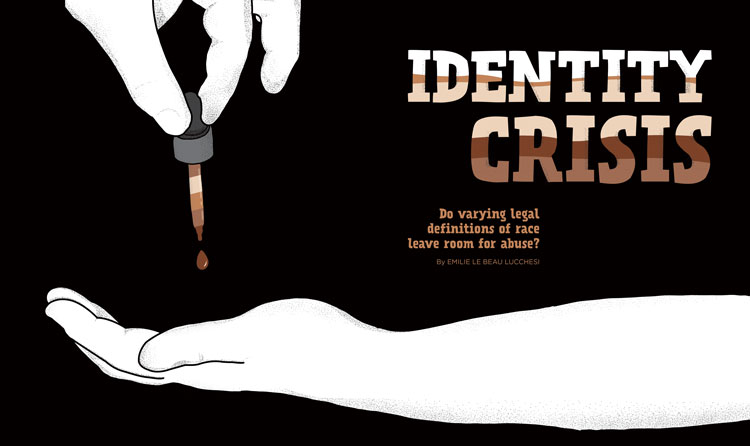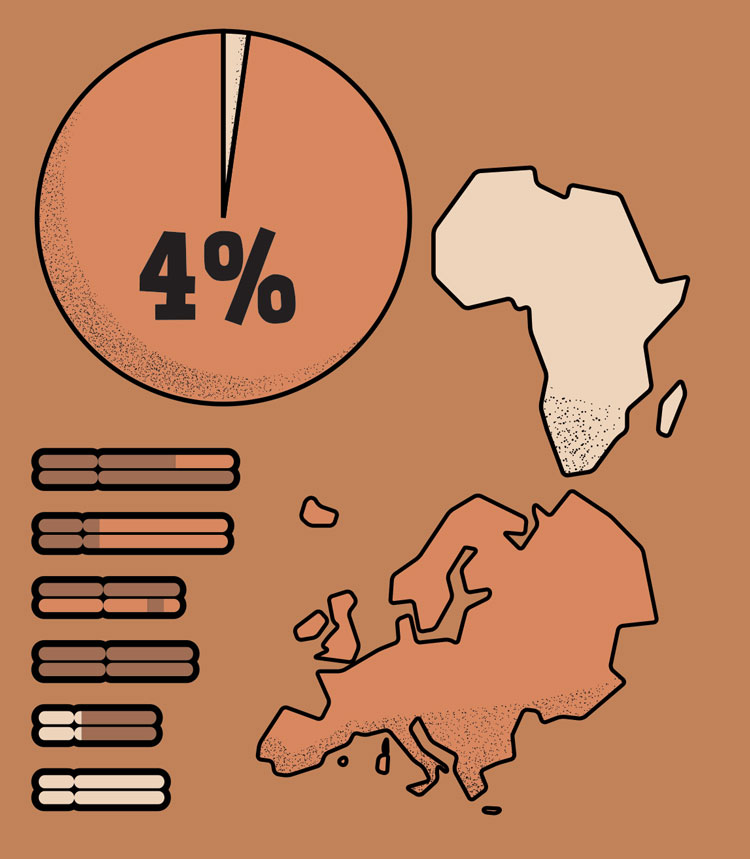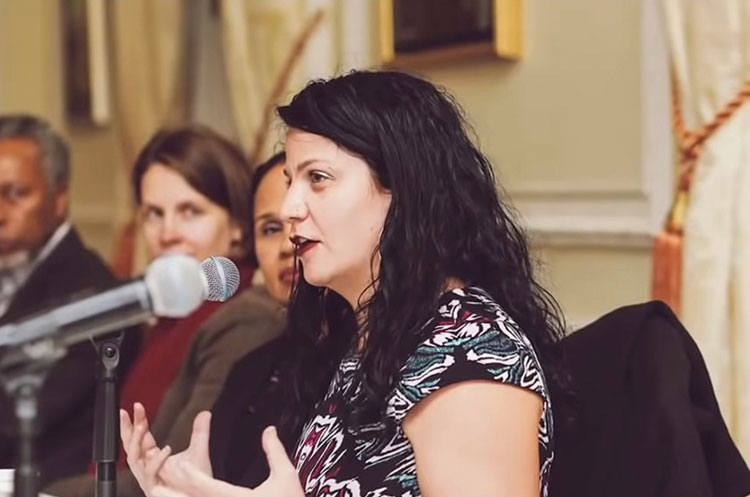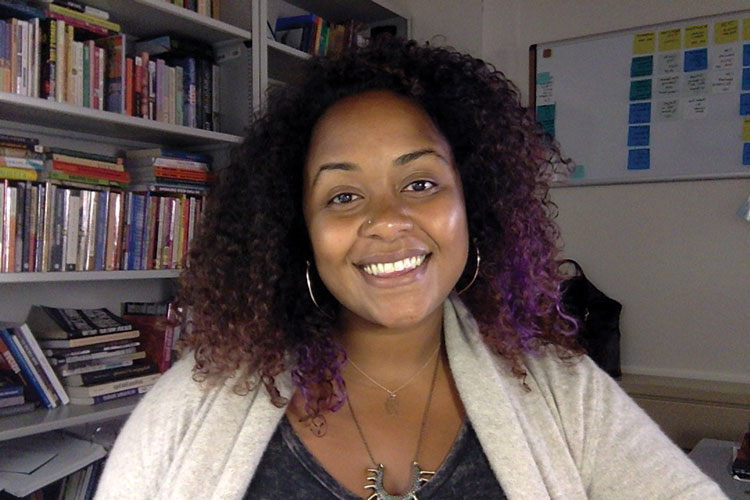Do varying legal definitions of race leave room for abuse?

Illustration by Sara Wadford/ABA Journal
In 2010, Ralph G. Taylor took an ethnicity DNA test and learned he had 4% African ancestry and 6% Native American ancestry.
The Washington-based insurance company owner, who has fair skin and short straight hair, used those test results to try to register as a minority-owned business to have access to the state’s minority-owned business contracts. Taylor said his 4% African ancestry qualified him under the state and federal definitions of what it means to be Black, which require that a person descend from “any of the Black racial groups of Africa.”
Taylor was able to successfully register with the Washington state Office of Minority & Women’s Business Enterprises, but he ran into problems when he applied for the U.S. Department of Transportation’s Disadvantaged Business Enterprise program. The agency considered Taylor’s driver’s license photo and questioned whether Taylor actually was Black. It was determined Taylor appeared “visibly identifiable as Caucasian,” and his application was denied in 2014.
Taylor responded by suing both state and federal authorities in 2016, but the district court granted summary judgment and dismissed the case. Taylor appealed, but the San Francisco-based 9th U.S. Circuit Court of Appeals affirmed the lower court in 2018 and refused a petition for a rehearing in 2019.
In the dismissal, U.S. District Judge Robert J. Bryan of the Western District of Washington wrote the agency had a “well-founded reason to question” Taylor’s racial membership claims, which Taylor had sought to bolster by noting membership in his local chapter of the NAACP as well as a subscription to EBONY magazine.
Taylor appealed to the U.S. Supreme Court in 2019, but his petition was denied. In March he said that he had his birth certificate legally changed to “nonbinary Black Native American.” (In 2017, it was changed from Caucasian to “Black, Native American, Caucasian.”) And he intends to resubmit an application for the DBE program with his amended birth certificate as proof of his Black identity.
“The government has to admit they have no legal way to define race,” Taylor says.
The federal government does not have precise legal definitions of what it means to be a member of a particular race. And with no centralized federal guidance, federal and state agencies have pieced together definitions, applying them in disparate settings.
In recent years, these inconsistent definitions have been criticized for allowing undeserving people to fit themselves into racial categories to benefit from contracts, jobs or university admissions slots intended for racial or ethnic minorities.
These vague definitions and how they are applied have similarly raised questions of equity, causing controversies that not only have captured headlines, but also have escalated to the courts. Some law scholars worry that attention to diversity in employment or admissions has become a type of commodity that is disconnected from the past and anti-discrimination laws intended to equal the playing field for minorities.

Illustration by Sara Wadford/ABA Journal
Questioning DNA
Taylor’s 2019 cert petition to the Supreme Court argued that racial definitions were inconsistent between state and federal agencies and therefore problematic and subjective: “In doing so, the same people, looking at the same evidence, and using the same definitions found Mr. Taylor both Black and not Black.”
It further argued that the inconsistent definitions meant the federal agency overstepped the state when denying Taylor certification. “In doing so, the federal agency did not give full faith and credit, let alone any type of deference, to the state’s determination that Mr. Taylor was Black.”
The Supreme Court declined to hear the case. Marc Rosenberg, counsel of record on the cert petition, declined to comment for this story. He no longer represents Taylor.
Taylor says his DNA is all that matters when meeting the government’s standard. He argues that socioeconomic status defines a person’s experience more than race, and he feels the Black community is too economically disparate to be considered one entity with a shared experience.
“What is the definition of the community? … Everything is socioeconomic,” Taylor says.
DBE business contracts do have a category for people who are disadvantaged socioeconomically, regardless of their race. The application process involves submission of financial statements to prove such a burden.
Similarly, the process for proving race involves submitting a state identification card, such as a driver’s license, and in some instances, a birth certificate indicating the race of the applicant, a parent or grandparent.
And while Taylor’s position relies heavily on the results of his ancestry test, states do not currently consider ethnicity DNA tests from companies such as 23andMe or Ancestry.com when determining a person’s race.
Genetics experts say ethnicity DNA tests are reliable and have meaning but are limited in what they say about a person’s ancestry and experience. For instance, siblings might not receive the same exact genetic distribution from one set of parents. And a parent of mixed ancestry might pass on unequal genetic markers to his or her offspring.
“It changes every time,” says Joseph Pickrell, who has a doctorate in human genetics and is the CEO of Gencove, a New York City-based biotechnology company.
Another complication is that ethnicity tests are designed to tell people where in the world their DNA has the strongest resemblance.
The tests are based on relatively small samples that do not include most indigenous tribes, according to Marcus W. Feldman, a biology professor at Stanford University who has a doctorate in mathematical biology and is the co-director of the Stanford Center for Computational, Evolutionary and Human Genomics.
Pickrell says the tests are best for identifying DNA between populations that were long geographically isolated, such as those of Asia, Europe or Africa. The more geographically close the regions are, the harder it is to distinguish between them, he adds.
“These bits of DNA that are being tested, they constitute the genotype. What you look like, how you behave, how fat you are, how tall you are—that’s your phenotype. The relationship of the genotype that is being tested by these companies has nothing do you with your phenotype,” Feldman says.
As a result of these limitations, some experts, including Feldman, advise against using DNA tests to determine race. “The term ‘race’ differentiates from ‘ancestry,’” Feldman says. “Ancestry tells you where those genes you are carrying came from in the world at some point in time. Race is constructed.”
Part of the problem is we disassociate the history of discrimination and marginalization with rewarding these benefits, says Erika K. Wilson, an associate professor at the University of North Carolina-Chapel Hill School of Law.
“It’s no longer about trying to correct past societal rights, particularly against Black and Indigenous Americans. It’s about diversity,” she says.
When it comes to programs aimed at promoting diversity in hiring, Wilson says they could be improved by focusing less on categorizations and more on experiences. She suggests the application process should include a personal statement in which applicants describe their personal histories and the barriers faced by their family members.

Illustration by Sara Wadford/ABA Journal
Disproving race
Employers might hesitate to question an employee’s racial identity, but the government does not. Although the government does not legally categorize private citizens’ racial categories, people applying for contracts intended for minority- and women-owned businesses must supply documentation, such as a parent’s birth certificate that proves their claimed race.
“We focus our public attention on [programs designed to promote diversity in] university admissions, but the big money is in federal government contracting,” says David Bernstein, a professor at George Mason University’s Antonin Scalia Law School and the executive director of the law school’s Liberty & Law Center, a research division that examines government encroachment on civil liberties.
Anti-discrimination laws from the 1960s prompted various state and federal agencies to create programs in the 1970s and ’80s to help minority- and women-owned businesses compete for contracts, often with states varying on these definitions among their agencies.
Federal court orders in the 1970s required police and fire departments to have racial makeups that reflected their communities. These contracts and hiring policies prompted inquiries and lawsuits from people claiming to be a member of a minority group.
Since the 1970s, Bernstein says, there have been lawsuits in which members of police and fire departments have claimed unfair hiring and promoting practices gave an advantage to Black people and Latinos. One famous case from the 1980s involved the Malone brothers in Boston, twins of Irish heritage who claimed to be Black on their job applications. They were exposed 10 years later when their names were on a list for Black firefighters eligible for promotion. The brothers were terminated, and a county judge ruled the brothers were indeed not Black.
In his decision, the judge stated the brothers did not have evidence of their racial identity. They did not look Black in appearance, provide proof of ancestry through a parent’s or grandparent’s birth certificate or live openly as members of the Black community. Bernstein notes the definition is problematic because others falsely performing racial identities have changed their appearance and lived openly as members of the community.
In some states, vague definitions have made it easier for people to qualify as minorities. The result is a lack of uniformity.
So a person who is considered Hispanic in one state might not qualify in another.
“The Hispanic category, frankly, is a very problematic category. It’s an ethnicity, not a race,” Bernstein says.
Rhode Island, for example, defines Hispanic as “all persons of Mexican, Puerto Rican, Cuban, Central or South American, or other Spanish culture or origin, regardless of race.” There is a separate category for people of Portuguese culture or origin.
But in Delaware, the Hispanic category is limited to “origins from any of the Spanish-speaking people of Mexico, Puerto Rico, Cuba, Central or South America or the Caribbean Islands.” This definition does not cover people with origins in Brazil, Portugal and Spain, nor Latin Americans of indigenous descent, such as the K’iche’ of Guatemala.
State definitions sometimes conflict with ones used by, for example, the U.S. Small Business Administration or the DOT. This means a person might meet the federal standards for a program, but not a state’s, or vice versa. The inconsistencies demonstrate how definitions of race are malleable and sometimes subject to controversial claims.
Legally defining race
When it comes to legal definitions of race in the United States, are people who they say they are?
“Americans don’t have an official race. It’s very complicated,” Bernstein says.
In the past, there were some state race registration laws that required a baby’s race be recorded on the birth certificate. Whether a child was classified as white, Black or Native American directed the course of his or her life: Who the child could marry and whether he or she could vote or have civil rights were all determined by the check of a box. In some states, such laws were rooted in slavery and segregation.
In 1970, a Louisiana state law specified a person was considered Black if they had “Negro blood” dating back five generations or 1/32nd of their racial heritage.
In 1982, Susie Guillory Phipps, then 48, sued the state’s vital record office after she learned her birth certificate designated her as Black.
She made the discovery years before when she was planning a trip to South America and needed her birth certificate to apply for a passport. She viewed herself as white and claimed the midwife present at her birth was the one who designated her as Black.
In response to the lawsuit, the state hired a genealogical researcher who found Phipps descended from an enslaved woman born in the 1760s.
Although the Louisiana law was repealed in 1983, the courts ruled against Phipps in her quest to have her birth certificate changed. She appealed to the Louisiana Supreme Court in 1986, but it upheld the lower court’s ruling. The U.S. Supreme Court declined to hear the case.
Midwives and vital records offices no longer determine a person’s race at birth. The United States now has both a self-reported and voluntary system when it comes to racial identity.
Both job and college applications, for example, maintain racial identification as an optional disclosure. Applications do not provide uniform definitions on what it means to be a member of a certain race.

Illustration by Sara Wadford/ABA Journal
Testing definitions
Title VII is the provision of the Civil Rights Act of 1964 that governs most employers when it comes to discrimination, says Barbara Johnson, an employment law attorney in Washington, D.C. “In general, Title VII prohibits employers from making decisions based on the applicant’s race.”
Employers cannot pass on an applicant because of race, but they also can’t intentionally hire a candidate solely because of race.
“Race can’t be a prerequisite for a job. You can’t say, ‘In order to have a job, I’m only going to hire LatinX or Black folks,’” Wilson says.
Affirmative action programs—which many people misinterpret as a quota system—are actually federal requirements for contractors and subcontractors to have training programs and recruitment programs designed to attract a more diverse applicant group.
Just as employers cannot hire because of race, they also cannot fire an employee whose racial identity is later disputed, Wilson says. Instead, employers can create protections by using an ethics agreement as part of the hiring process.
“Many employers do this anyway, so that if you misrepresent on the employment application a detail or fact, contract law allows termination,” Wilson says.
Race and ethnicity also can’t be a sole factor in the college admissions process, but it can be considered along with test scores, grade point average, extracurricular activities and socioeconomic status.
In the 2016 Supreme Court decision Fisher v. University of Texas, the justices upheld the school’s right to include race and ethnicity as one aspect of the admissions process.
Similarly, in 2019, a district court judge ruled in favor of Harvard University after a group of Asian American students rejected by the school sued and claimed the admissions process intended to limit the number of Asians; the decision was upheld in 2020 by the Boston-based 1st U.S. Circuit Court of Appeals. In late February, the plaintiffs petitioned the Supreme Court.
Many colleges and universities have sought to increase diversity among their faculty or administrators. In these in-stances, the department might call for a scholar with a specific area of research that is more likely to attract applicants from an underrepresented community.
For example, this might have been the case when George Washington University in Washington, D.C., hired Jessica Krug (which she said was pronounced “Cruz”). Krug was a history professor, award-winning author, and she self-identified as an Afro-Puerto Rican woman.

Author and history professor Jessica Krug had been assuming a fake racial and ethnic identity when she was hired as a faculty member at George Washington University. Photo courtesy of YouTube.
Bernstein says the job ad for her position likely specified the candidate be able to teach courses in African history and have research related to African history and the African diaspora.
Krug said she was the daughter of two drug addicts, and she claimed she worked relentlessly to overcome her humble origins to become a full-time faculty member at GWU in 2012. As a scholar, she promised to remain true to her roots as a “unrepentant and unreformed child of the hood.”
She seemingly brought a dose of racial diversity to the history department’s mostly white male roster.
Days after the 2020 fall semester began, however, Krug posted a blog article on Medium confessing her life was a lie. She was a white woman from suburban Kansas City. For years, she had dyed her blondish hair black, applied self-tanner, adopted a fake Bronx accent and intentionally mispronounced her last name. Other academics in her discipline had uncovered the truth prior to her public confession and planned to confront her.
Krug realized that she had been found out and chose to reveal the truth herself first. In response, the history department at GWU immediately released a statement calling for Krug to resign. She complied.
“Her case was easy: scholarly fraud,” Bernstein says.

David E. Bernstein says vague definitions of race, such as those for Hispanic people, leave room for confusion. Photo by John Boal
A GWU spokesperson declined to comment on the situation, and it’s unknown whether Krug identified herself as Black or Hispanic on her application. But she did assume a false identity by pretending to be Afro-Puerto Rican, which called the integrity of her scholarship and mentorship into question.
Krug isn’t the only academic who has either quietly or openly lied about racial identity. Earlier in 2020, when a GWU English professor died from COVID-19, his family then revealed his name was Herman Glen Carroll, not Herman G. Carrillo. His Afro-Cuban identity was fictitious. He wasn’t from Cuba; he was from a Black, non-Hispanic family in Detroit.
In September 2020, doctoral student Christina Vitolo-Haddad at the University of Wisconsin-Madison was exposed for faking a racial identity; she claimed Afro-Cuban ancestry, which proved fraudulent. In response, Fresno State University rescinded its tenure-track job offer set to begin in 2021.
Some call it “racial fraud,” or the act of falsely assuming a race or ethnic identity.
In 2017, legal scholars Khaled A. Beydoun and Wilson coined the term “reverse passing” in the UCLA Law Review to describe white people who intentionally pass as nonwhites to gain access to job opportunities, college admissions, political benefits or social recognition.
Reverse passing presents a complicated legal issue with no set standard for how employers, colleges or government agencies should respond when a false identity is exposed. In many instances, such as the Krug case, employers are not supposed to consider race as a major factor when evaluating job candidates.
Thus, investigating allegations of such a faked identity could open an employer to discrimination claims.
Proving race
The Krug case was unique because it’s one of the few instances in which an employer was emboldened to dispute an employee’s racial identity. Bernstein says most employers would not set themselves up for the potential discrimination liability.
GWU did not investigate Krug. Other academics in the field who were not GWU employees suspected Krug was a fraud and began researching her background. Yomaira C. Figueroa Vásquez, an associate professor of English at Michigan State University who works on Afro-Latinx and Afro-Hispanic literature and culture, was one of the scholars who investigated Krug.

Michigan State University professor Yomaira C. Figueroa Vásquez helped investigate Jessica Krug, who faked an Afro-Puerto Rican identity. Photo courtesy of Yomaira Figueroa.
Figueroa Vásquez did not know Krug personally. A junior scholar contacted Figueroa Vásquez and said she doubted Krug’s identity but was afraid to come forward with the allegations.
“I was able to very quickly use Google and look up her hometown, her parents’ obituaries, which I cross-checked with each other,” Figueroa Vásquez says.
“I consulted with another senior scholar, another Afro-Latina, on what was the ethical thing to do. We decided to speak with another senior scholar who knew her distantly and someone who knew her better.”
As for Taylor, despite his losses in court, he continues to make claims to his—and now his children’s—racial identity.
“My daughters can now say they are Black when they apply for college. They are Black. The definition is to trace your ancestry to Africa. They can,” Taylor says.
Taylor assumes his daughters will have a better chance of being accepted to a competitive school or receiving scholarships if they identify as Black on their applications.
But scholars such as Figueroa Vásquez disagree that a person with a white lived experience should pursue affirmative action programs intended to promote equity, even though it may be technically legal.
“You see white folks attempting to take up Blackness or other identities to get what they believe is an advantage. It’s a sense of entitlement,” Figueroa Vásquez says. “There’s a deep-seated racism in this practice because they don’t understand why these resources were set aside. It’s not like there is many of [these resources.] There are very few, and white people have decided they are entitled to these things as well.”
Wilson agrees, pointing to her own family’s history.
“I could speak about my parents growing up in Jim Crow South and my grandmother not being able to finish eighth grade because she was Black,” Wilson says. “I now teach at a law school where they could not have been admitted.”
This story was originally published in the June/July 2021 issue of the ABA Journal under the headline: “Identity Crisis: Do varying legal definitions of race leave room for abuse?”
Emilie Le Beau Lucchesi is the author of Ugly Prey and This is Really War. She holds a doctorate in communication from the University of Illinois-Chicago and studies health communication, medical history and stigma communication.



